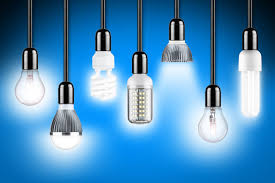
We forget just how painfully dim the world was before electricity. A candle, a good candle, provides barely a hundredth of the illumination of a single 100 watt light bulb. Bill Bryson
The early man, was as wanderer, he walked from one place to another in search for his needs and want, if everything was provided to him by nature our history books wouldn’t have spoke about them this way.
He pondered and wondered of making his life easier for him in so many ways which he tried in doing some things to make life easier for him, one of mans achievement was creation of light, but the early man never thought of light then, what he needed was a medium of cooking his meat after hunting, this eventually led him the creation of fire through rocks
Ages or stages of light
The early mans staged was tagged the age of “antiquity”
Light
The history of light can be traced back to more than 150 years ago when inventors started planning on the idea of how we can use and harness energy in our homes, school, offices, hospitals etc. in most books the invention of light bulbs can be credited to one scientist but I wont totally agree with that because it was a joint project by some notable scientists to create light.
17th century
_

First its idea was first fashioned in the 17th century through the invention of chandeliers designed with crystals, this mainly was affordable mostly by the rich or even the monarchs of that time,
18th century

Later on in 1879 before “Thomas Edison” started making his incandescent bulb, his work served man for more than forty years. He and his researchers also tried by improving and extending its lasting hours to 14.5, more improvements by his co-researches in extended the bulbs life time up to 1,200 hours.
19th century
There are many scientists that tried in light invention two notable Germans (glassblower heinrich geissler and a physician Julius pluker) learnt that they could generate light when they remove almost all an air in a long glass tube and passing an electric through it , this worked very well in the production of light and it was tagged {the geissler tube}.
Other achievements were that of Humphry davy 1800-9, Murdoch 1802 that of his “soho foundry with gas” and in 1897 Walter Nernst though his invention of incandescent lamp. There are many achievements in the 19th century, different scientist using different methods in creating a bulb , although the used different ways , there works was targeted in the creation of one thing “light”
20th century
Thomas Edison’s work also served greatly in the 20th century, I will say that his works were modified and is been used in this 21th century.
In early 1950’s some group at “general electric, still pioneers in lighting technology invented the tungsten halogen lamp. The tungsten halogen lamp uses a very high temperature filament filled with quartz and produces a very strong bright light, other inventions are that of
(a) 1987 Chung w. Tang and Steven van Slyke at Eastman Kodak , they created the first practical organic light-emitting diode (OLED)
(b) 1991 Philips, his bulbs lasts for more than 60,000 hours using magnetic induction
(c) 1981 thorn lighting lightning group in their invention of the “ceramic discharge metal-halide lamp”
(d) And in 1994 the first commercial sulfur, lamp is sold by fusion lighting
All these works were aimed at achieving, the dream of long lasting electricity, the 29th century was a great and a notable moment, because many group tried there best in achieving the goal of light creation in different ways. Most of its works was brought over to the 21th century.
21th century

In this age, the trending system is that of the light-emitting diodes (LEDs) which first appeared in 1962, LEDs continues to develop day-by-day, if we take a count on number of people using LEDs, we will get a high number and its demand increases day by day,
Research has proven that the ever developing technology of LEDs will encourage more commercial building owners to turn to more energy-efficient lighting solution.
The sole dream of a scientist is to make a better place for the world through his inventions and scientific discoveries which would in turn catapult the worlds civilization to its peek.
Refrences
(i)https://energy.gov/articles/history-light-bulb
(ii)https://thegrid.rexel.com/en-us/lighting/w/wiki/85/the-evolution-of-light-bulbs--overview-of-the-main-types
(iii)https://en.m.wikipedia.org/wiki/Timeline_of_lighting_technology
(iv)https://www.brainyquote.com/topics/electricity
(v)few of what i discussed with my mom last week when i learn t about @steemstem

*Thanks for the read

OMG! This is SUCH an AMAZING post! Thank you for sharing! I gave you a vote!!
Downvoting a post can decrease pending rewards and make it less visible. Common reasons:
Submit
THANKS for stopping by
Downvoting a post can decrease pending rewards and make it less visible. Common reasons:
Submit
Thank for reminding me of this theory, this took me back to my secondary school physics.
#steemsoccer1
Downvoting a post can decrease pending rewards and make it less visible. Common reasons:
Submit
Downvoting a post can decrease pending rewards and make it less visible. Common reasons:
Submit
i would do a very better job next time , although am an art student , i also love a lot of science stuffs.
will follow the tips you provided me with , thanks for checking me out
Downvoting a post can decrease pending rewards and make it less visible. Common reasons:
Submit